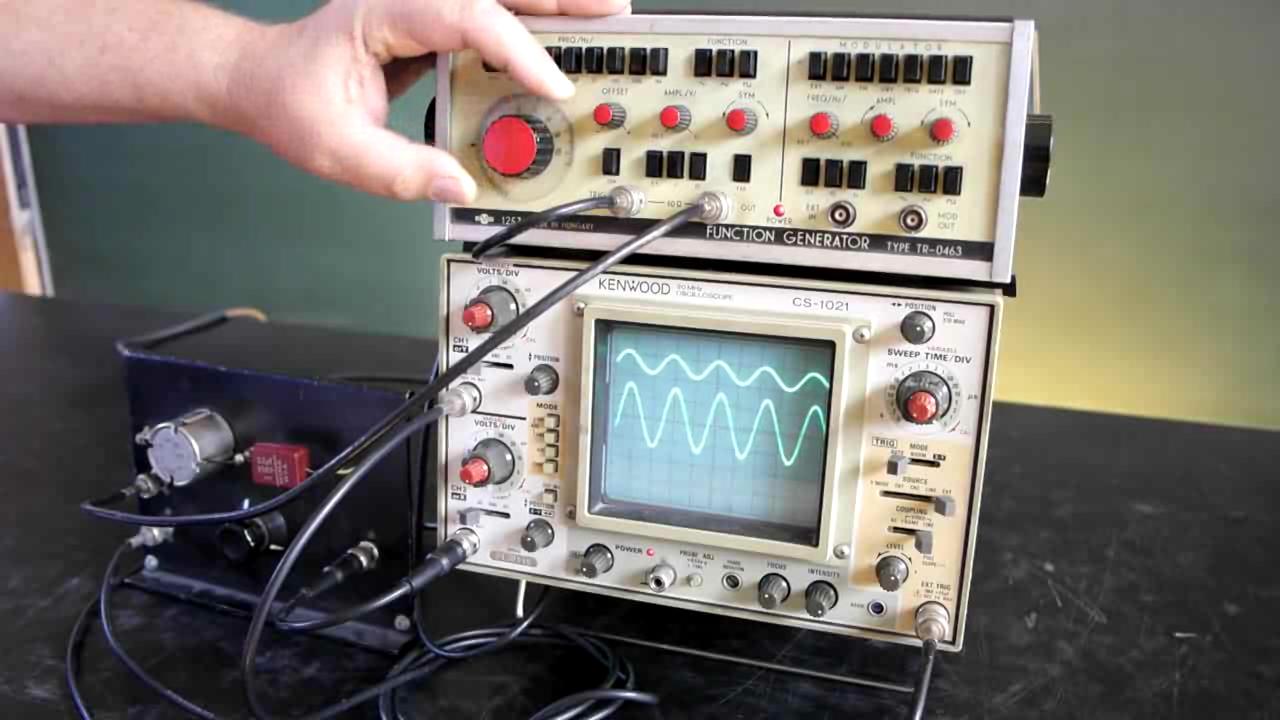„Kényszerrezgés I.” változatai közötti eltérés
| 9. sor: | 9. sor: | ||
== Forced Oscillation I. == | == Forced Oscillation I. == | ||
| − | + | Let us examine a RLC series circuit. We attach a signal generator with a constant voltage and changeable frequency to the input. On the dual-beam oscilloscope, the top signal is the signal generator, while the bottom shows the signal coming out of the circuit. On a low frequency, the two amplitudes and frequencies will be nearly the same. As we increase the frequency, only the bottom signal’s amplitude will change. Let us observe that as we change the frequency, the two signal’s phase positions will also change. With the frequency increase, the amplitude increases for a while, and is maximal at a 90 degree phase position. Then we have matched the frequency with the resonance frequency of the circuit. If we continue to increase the frequency, the amplitude will now decrease, and the phase position will eventually reach 180 degrees. | |
</wikitex> | </wikitex> | ||
A lap jelenlegi, 2014. március 9., 13:28-kori változata
Az elhangzó szöveg
Egy soros RLC rezgőkört fogunk vizsgálni. A bemenetére állandó feszültségű, változtatható frekvenciájú jelgenerátort kapcsolunk. A kétsugaras oszcilloszkópon a felső jel a jelgenerátor, míg az alsó jel a rezgőkör kimenetén megjelenő feszültséget mutatja. Alacsony frekvencián a két jel amplitúdója és fázishelyzete azonos. A frekvencia növelésével csak az alsó, a rezgőkör kimenetén megjelenő feszültség amplitúdója változik. Figyeljük meg, hogy a frekvencia változásával a két jel fázishelyzete is változik. A frekvencia növelésekor az amplitúdó egy darabig növekszik, maximum értékénél a fázishelyzet kilencven fok. Ekkor a rezgőkört a rezonancia frekvenciájára hangoltuk. A további frekvencia növelés hatására az amplitúdó csökken, a fázishelyzet száznyolcvan fokra tolódik.
Forced Oscillation I.
Let us examine a RLC series circuit. We attach a signal generator with a constant voltage and changeable frequency to the input. On the dual-beam oscilloscope, the top signal is the signal generator, while the bottom shows the signal coming out of the circuit. On a low frequency, the two amplitudes and frequencies will be nearly the same. As we increase the frequency, only the bottom signal’s amplitude will change. Let us observe that as we change the frequency, the two signal’s phase positions will also change. With the frequency increase, the amplitude increases for a while, and is maximal at a 90 degree phase position. Then we have matched the frequency with the resonance frequency of the circuit. If we continue to increase the frequency, the amplitude will now decrease, and the phase position will eventually reach 180 degrees.
